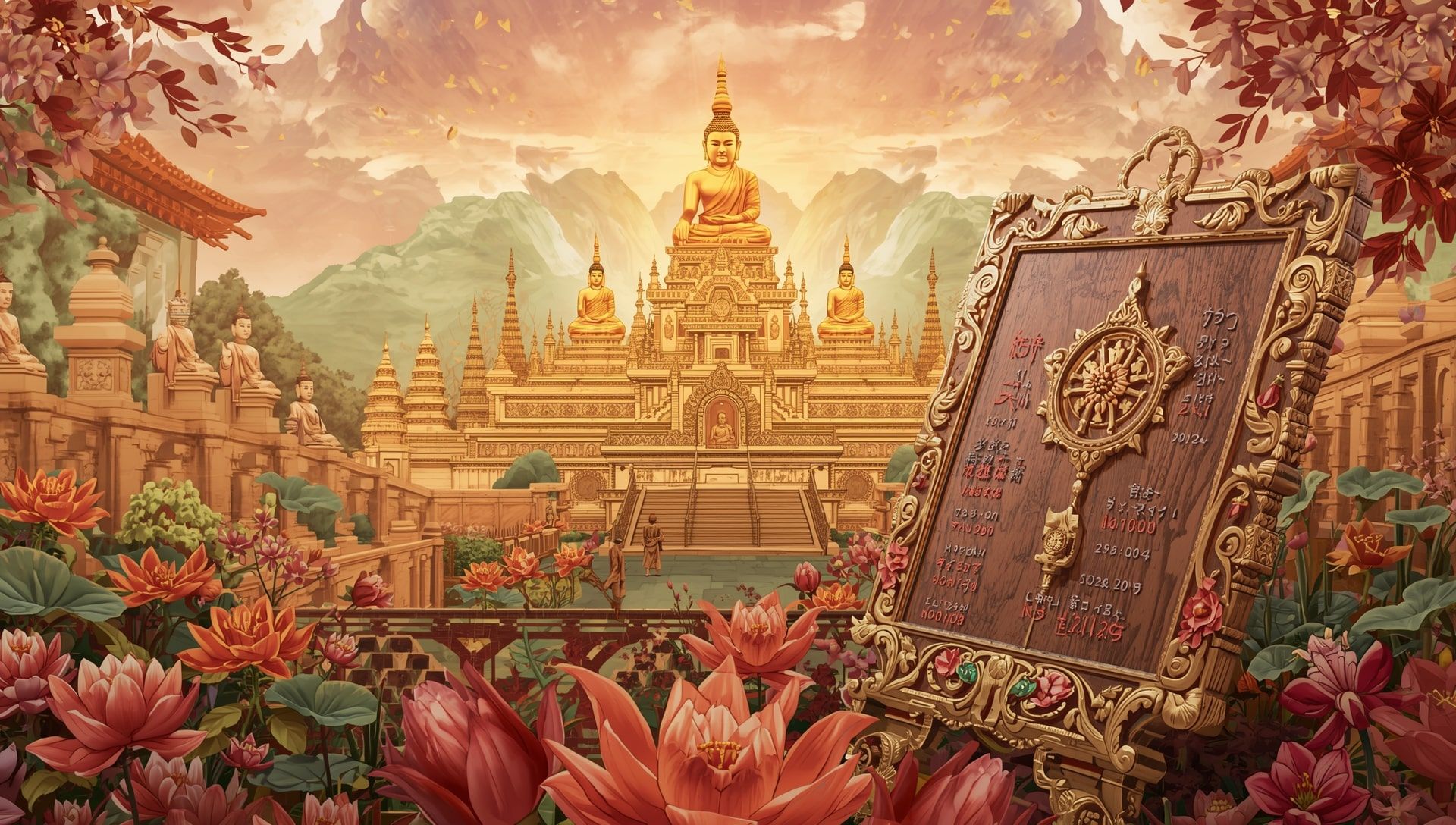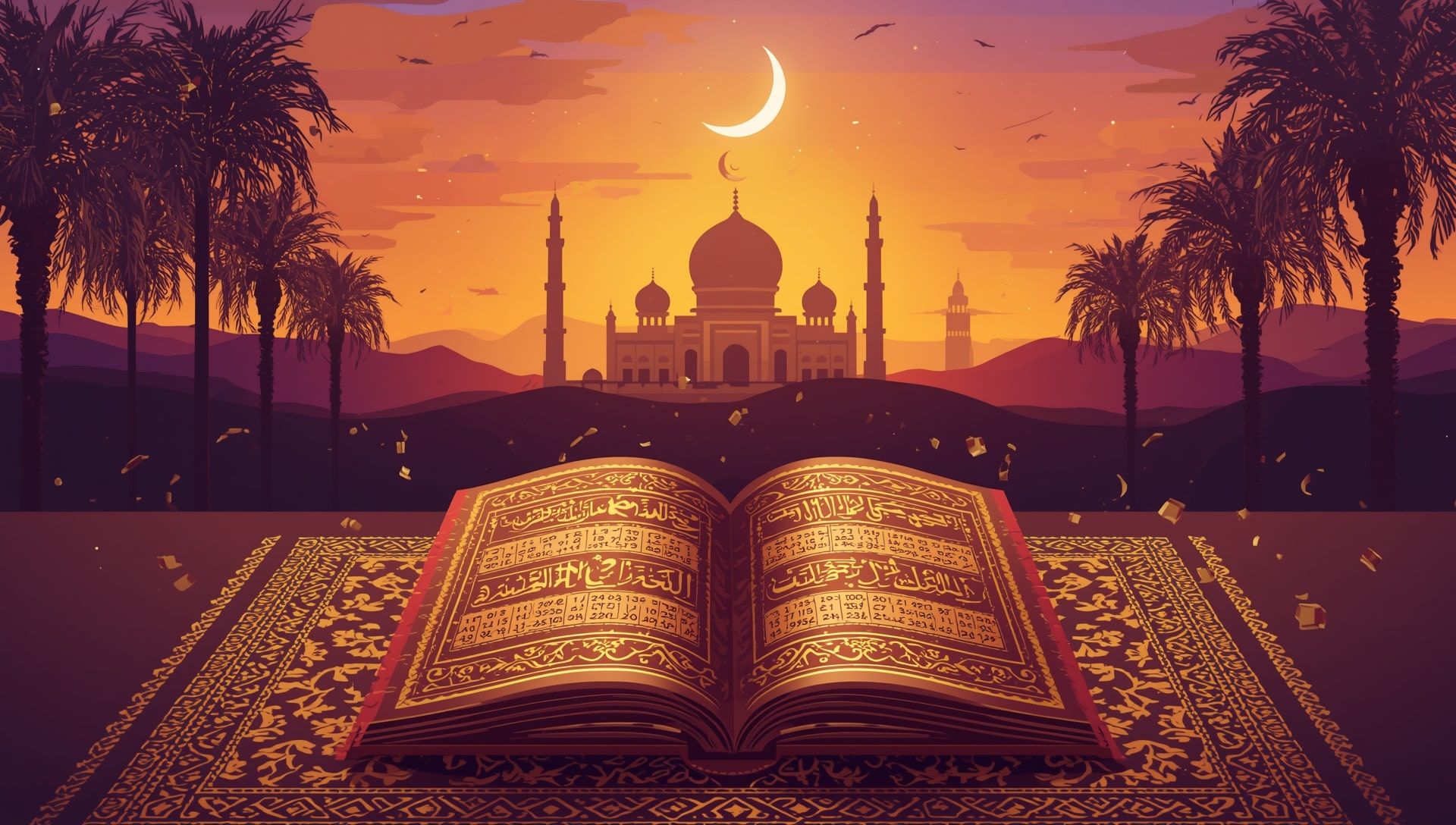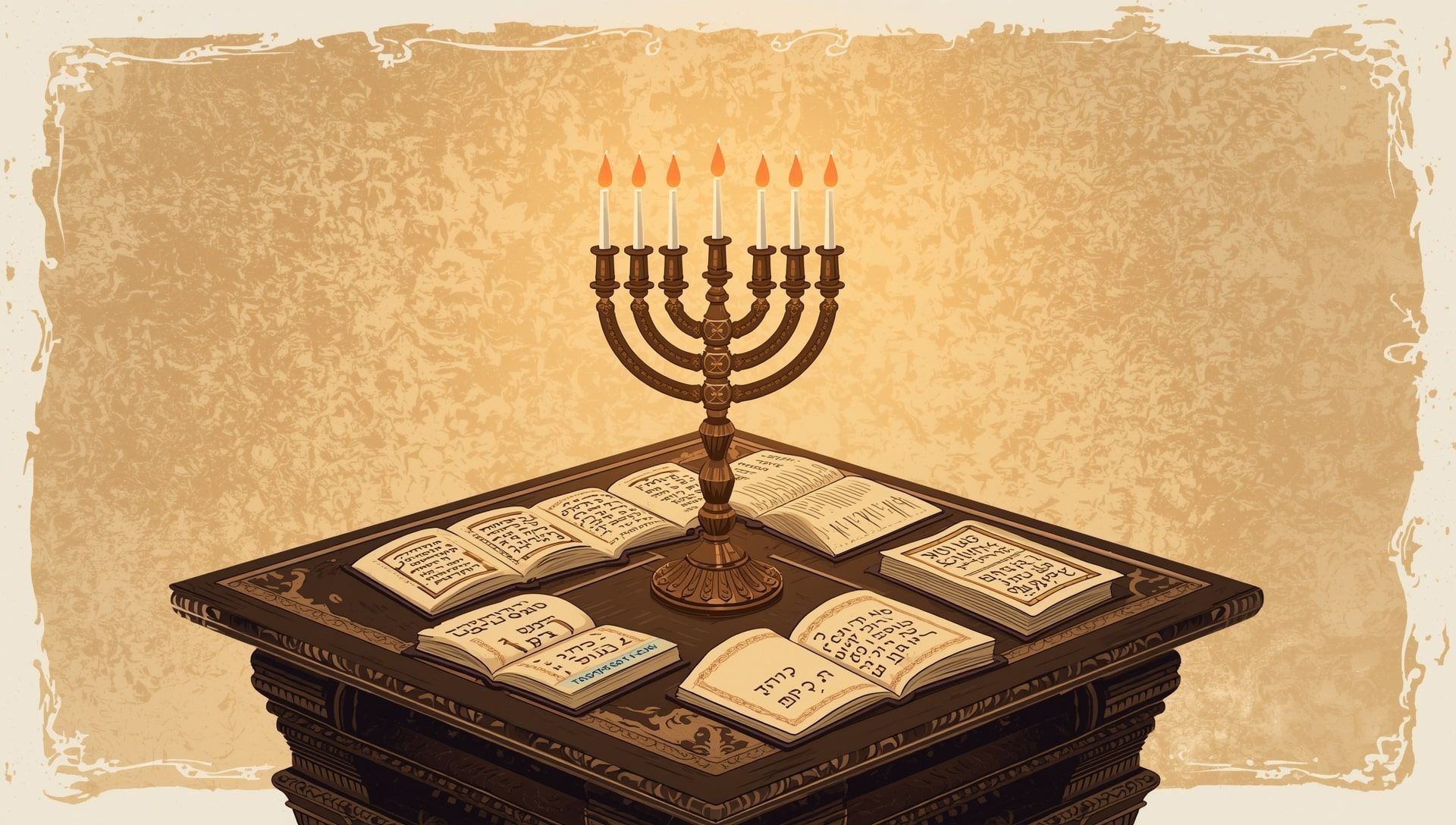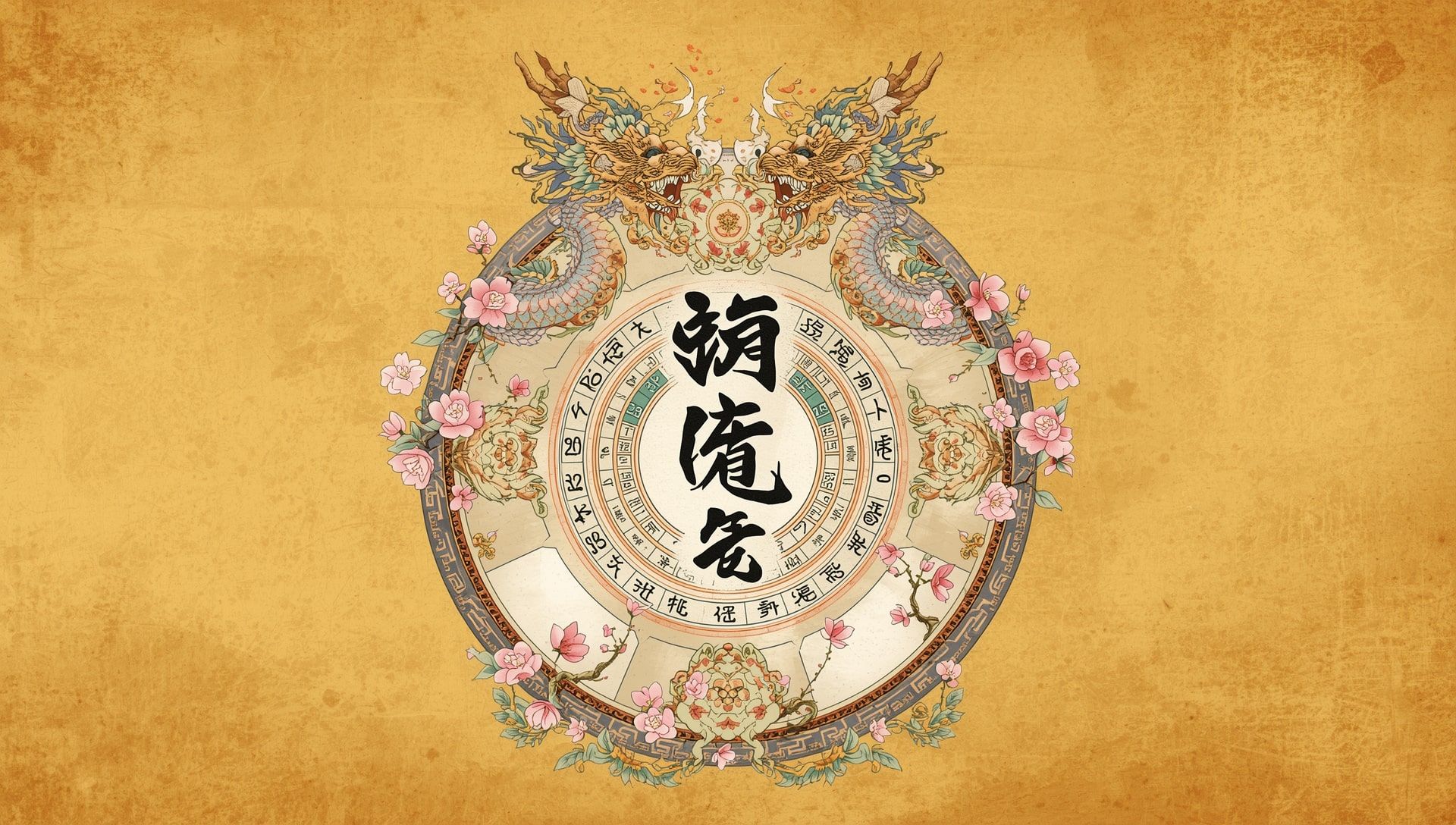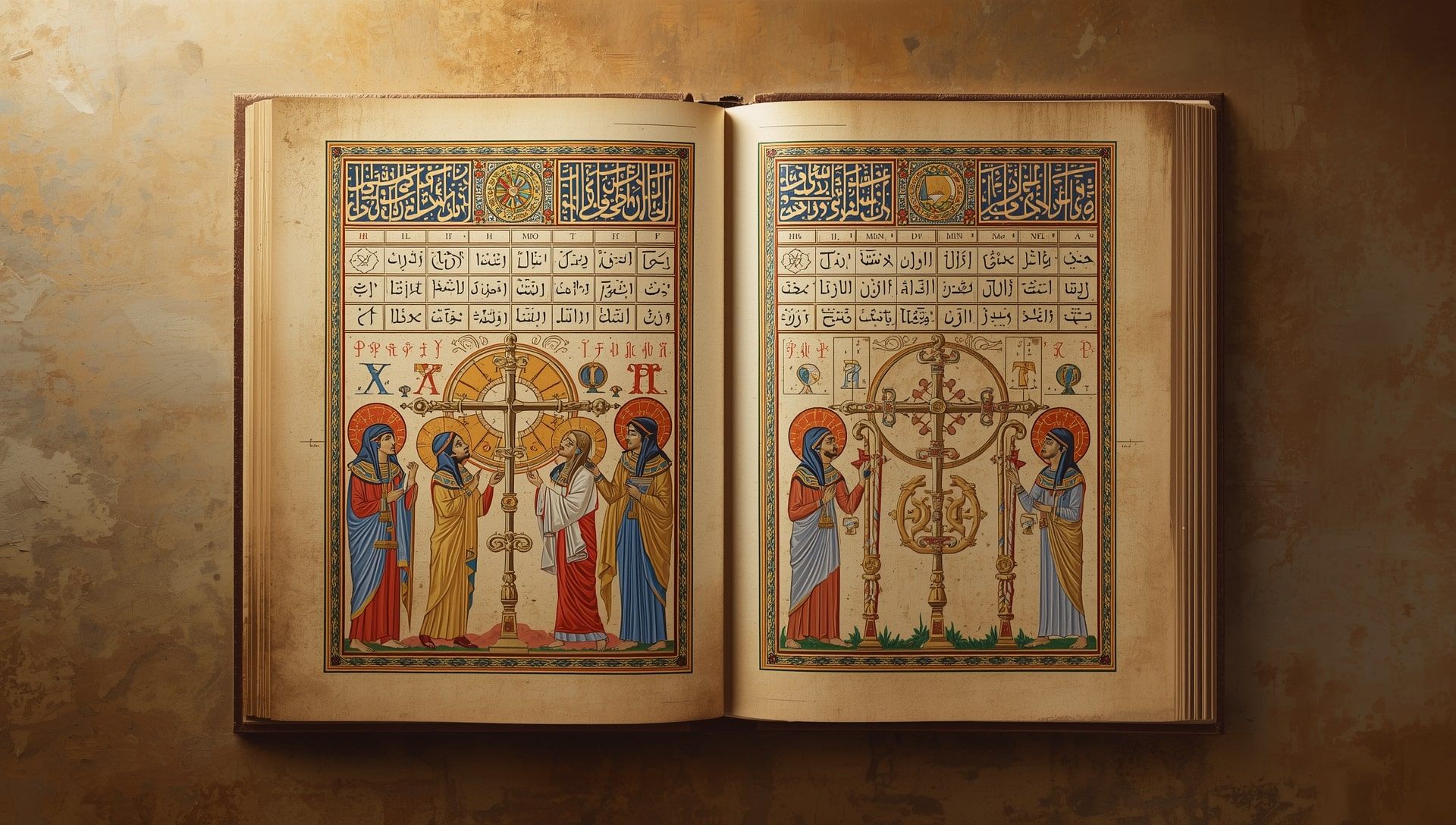The Buddhist calendar is not just a way to count time. It is a way to understand time itself. Rooted in ancient India and shared across Buddhist cultures, this calendar weaves together astronomy, philosophy, and daily life. Every phase of the Moon, every turn of the season, carries spiritual significance. For Buddhists, the passing of time is not loss, but lesson, it is the visible rhythm of impermanence in motion, much like how modern calendars organize human experience into measurable cycles.
Historical Foundations and Evolution
The Buddhist calendar traces its lineage to the lunisolar calendars of ancient India, particularly the one used during the life of Siddhartha Gautama, the historical Buddha. When Buddhism spread beyond India, monks and astronomers carried with them this method of tracking time. Each culture adapted it to its geography and tradition, yet the core structure remained unchanged, a lunar calendar synchronized with the solar year through astronomical correction similar to systems described in other calendar evolutions.
The epoch of the Buddhist calendar begins with the Buddha’s Parinirvana, his final passing. Most Theravada Buddhist traditions mark this as occurring in 543 BCE. Hence, to convert a Gregorian year to the Buddhist Era (B.E.), one simply adds 543. Thus, 2025 CE corresponds to 2568 B.E. In Tibetan and East Asian systems, this epoch may vary slightly, but the symbolic idea remains the same, time begins with enlightenment and the release from suffering, much like the cosmic perspectives found in the Hindu cosmic time system.
How the Calendar Works
The Buddhist calendar is a lunisolar system, meaning it measures both the movement of the Moon and the Sun. The Moon defines months, and the Sun governs the year. This dual structure allows the calendar to capture the rhythm of both celestial bodies, balancing emotion (Moon) and energy (Sun). A lunar year of 12 months totals about 354 days, shorter than the solar year by roughly 11 days. To realign the seasons, an extra month is inserted every two to three years, creating a leap year known as Adhikamāsa. This principle of adjustment mirrors astronomical precision found in time zone systems across the world.
This correction ensures that sacred festivals such as Vesak, Asalha Puja, and Kathina always occur in their proper seasonal contexts. Without it, lunar drift would cause spring celebrations to fall in winter and harvest rituals to occur in summer. The precision of these adjustments reflects the Buddhist respect for cosmic balance, akin to the synchronization found in global world clocks.
Lunar Phases and Their Meaning
The Moon governs the flow of Buddhist ritual life. Each month begins with the new Moon and concludes with the next new Moon. It is divided into two fortnights:
- Bright Fortnight (Waxing Phase): Symbolizes growth, insight, and awakening.
- Dark Fortnight (Waning Phase): Represents reflection, renunciation, and inner stillness.
Monks and lay followers observe Uposatha on the new Moon, full Moon, and quarter phases. On these days, they renew vows, meditate, fast, and listen to the recitation of the Patimokkha, the monastic rules. Each lunar phase becomes a marker for introspection and discipline, turning the calendar into a cycle of spiritual renewal, much like observing recurring celestial events in time-based observances.
The Twelve Months of the Buddhist Year
Each Buddhist month carries agricultural, seasonal, and spiritual associations. The lunar months do not perfectly match Gregorian ones but correspond roughly to the same annual flow:
- Vesakha 🌕 – Celebrates Vesak, the most sacred month honoring the Buddha’s birth, enlightenment, and Parinirvana.
- Jettha 🌿 – Early monsoon and planting season, symbolizing growth of faith.
- Asalha ☀️ – Marks the Buddha’s first sermon and the beginning of the monastic rains retreat.
- Savana 🌧️ – A period of meditation, self-discipline, and retreat.
- Bhaddapada 💧 – The rains retreat continues, communities emphasize compassion and giving.
- Assayuja 🌾 – Month of Kathina, when lay followers offer robes and supplies to monks.
- Kattika 🍂 – Transition to the cool season, ideal for reflection and rest.
- Magasira 🪔 – Month of communal merit-making and honoring ancestors.
- Phussa ❄️ – Period of solitude, associated with inner strength during winter.
- Magha 🔥 – Celebrates Magha Puja, the spontaneous gathering of 1,250 enlightened disciples.
- Phagguna 🌕 – Month of gratitude and preparation for the new cycle.
- Chaitra 🎉 – Renewal of vows, cleansing, and the approach of Vesak once more.
This twelve-month sequence mirrors the natural world, growth, nourishment, reflection, and return. The repeating pattern is a living reminder that life moves in cycles, not lines, much like the continual motion tracked in a stopwatch or timer.
Major Buddhist Observances and Festivals
Festivals in the Buddhist calendar are timed by lunar phases, especially the full Moon, which symbolizes clarity and awareness. Each festival marks not only an event in the Buddha’s life but a principle of Dharma. These observances unite spiritual reflection with seasonal rhythm, similar to how world holidays align with astronomical or cultural cycles.
🌕Vesak (Buddha Day): Celebrated on the full Moon of Vesakha. Commemorates the Buddha’s birth, enlightenment, and passing into Nirvana.
🔥Asalha Puja: Marks the Buddha’s first sermon at Deer Park, introducing the Four Noble Truths.
🌧️Vassa (Rains Retreat): A three-month monastic retreat for study and meditation during the monsoon season.
🌾Kathina: Occurs at the end of Vassa when lay followers offer robes to monks in gratitude.
🪔Magha Puja: Celebrates the gathering of 1,250 enlightened disciples without prior arrangement, symbolizing spontaneous harmony in the Sangha.
Astronomy and Mathematics Behind the Calendar
The Buddhist calendar incorporates detailed astronomical principles originally derived from the Surya Siddhanta and later refined through observation. The average length of a lunar month is 29.5306 days, making a lunar year 354 days long. The solar year, by contrast, is about 365.258 days. To correct the drift, an extra lunar month is added seven times in every 19 years. This 19-year Metonic cycle ensures that full Moons and seasons realign periodically, similar to leap year adjustments in solar calendars.
Traditional Buddhist astronomers used shadow sticks, gnomons, and water clocks to calculate solar declination, equinoxes, and planetary positions. Their methods were sophisticated enough to predict eclipses centuries before modern equipment existed. In Tibet and Burma, special mathematical treatises called Karana texts documented these calculations, demonstrating a deep union of science and spirituality, much like how IANA time zones maintain global synchronization.
-
🪐 Solar year = 365.258 days
🌙 Lunar month = 29.5306 days
📅 Leap month added seven times in 19 years
🕰️ Epoch = 543 BCE (Buddha’s Parinirvana)
🌕 Full Moon days mark Uposatha and festivals
Regional Adaptations of the Buddhist Calendar
Though based on the same lunisolar logic, Buddhist calendars vary slightly across regions due to local astronomical systems and cultural interpretations. This adaptability is similar to how time zone maps account for global variation while maintaining coherence.
- Theravada Calendars: Used in Thailand, Myanmar, Laos, and Sri Lanka. These closely follow Indian astronomical principles, beginning the year with Vesakha. The Thai system is used for civil dates, while monks rely on the lunar cycle for rituals.
- Tibetan Calendar: Blends Indian and Chinese elements. It incorporates zodiac animals, five elements, and a 60-year cycle. The new year, Losar, usually falls in February or March, comparable to cycles seen in the Chinese calendar.
- Chinese Buddhist Calendar: Integrated with the Chinese lunisolar system. Major festivals such as Vesak are calculated by lunar phase but aligned with Chinese seasonal markers.
- Japanese Calendar: After modernization, Japan adopted the solar Gregorian calendar but still celebrates traditional observances based on Buddhist lunar dates, particularly Obon and Hanamatsuri.
The Calendar’s Spiritual Purpose
The Buddhist calendar embodies the teaching of anicca, impermanence. Each lunar phase reminds practitioners that everything changes, from the Moon in the sky to the thoughts in the mind. Time is not to be conquered but understood. Monks structure their days around meditation, chanting, and mindful work, guided by the natural rhythm of light and shadow, much like structured routines created with daily alarms.
Time as a Teacher of Mindfulness
In Buddhism, time is not an external force but a field for awareness. The calendar helps practitioners see time as meditation itself. The repetition of full Moons, monsoon seasons, and yearly festivals mirrors the cycle of thought and emotion in the human mind. Observing these patterns brings calm and insight.
The Buddhist calendar encourages living in rhythm with the universe rather than against it. Each rising Moon is an invitation to begin again. Each new year is a chance to deepen wisdom and compassion. Through its gentle guidance, the Buddhist calendar transforms ordinary days into moments of practice, reminding all who follow it that enlightenment is not beyond time but within it.
The Eternal Flow of Dharma Through Time
The Buddhist calendar reveals time as an ally in awakening. It connects celestial motion to inner stillness. It binds communities together through shared observances. It turns astronomy into mindfulness and mathematics into meditation. The waxing Moon becomes a lesson in growth, the waning Moon, a lesson in letting go. Every phase of the sky reflects a truth of the mind.
In essence, the Buddhist calendar is a sacred dialogue between heaven and Earth, science and spirit, calculation and compassion. To follow it is to walk the middle path of time, steady, aware, and at peace with the endless unfolding of existence.
